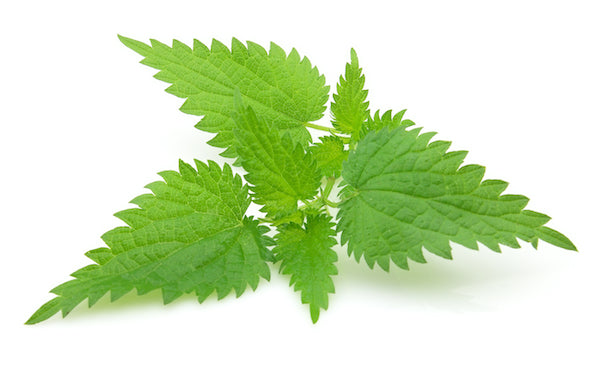Nettle leaves

General Information
Chinese name: 荨麻 (Xún Má)
Scientific names: Urtica dioica L. and Urtica urens L.
Other names used: Large Nettle, Dioic Nettle, Stinging Nettle or Small Nettle.
Nettle Leaves Benefits at a Glance:
- Re-mineralizing and Strengthening
- Anti-rheumatism
- Anti-diarrhea
- Acts on Blood Pressure
Botany and Origins
Plant Description
Urtica dioica L. is a herbaceous plant that belongs to the Urticaceae family. There are about thirty species of nettles worldwide, about 10 of which are in Europe.
The largest ones can measure more than one meter in height. Their leaves are strongly serrated. The stems and leaves of nettles are covered with small stinging hairs called scientifically stinging trichomes. These are actually small hollow siliceous tubes filled with an allergenic mixture of histamine, acetylcholine, and formic acid. This mixture is the origin of the pains that can be felt on the skin when touching the nettle.
Geographic Origin
The nettle is of Eurasian origin and is now present worldwide.
History
In Traditional Chinese Medicine, nettle leaves are typically used to treat "painful obstructions". This mainly corresponds to pain related to arthritis and rheumatism.
Furthermore, nettle leaves are cold in nature. This means that nettle leaves typically help people who have too much "heat" in their body.
The balance between Yin and Yang is a key health concept in TCM. It is said that those with too much heat in their body either have an excess of Yang (since Yang is warm in nature), or a deficiency of Yin (Yin is cold in nature).
Depending on your condition, nettle leaves can help restore a harmonious balance between Yin and Yang. Nettle leaves also have a "bitter and pungent" taste.
The theory of the "five elements" in Traditional Chinese Medicine states that the taste of ingredients is a key determinant of their action in the body. Bitter ingredients like nettle leaves tend to have a cleansing effect on the body by eliminating heat, drying moisture, and promoting.
On the other hand, spicy ingredients tend to promote the circulation of Qi and bodily fluids. That is why, for example, a person tends to sweat a lot when they eat spicy food.
The tastes of the ingredients in TCM also determine the organs and meridians they target. It is believed that spicy nettle leaves target the liver. In TCM, the liver is often referred to as the "general" of the body as it is responsible for regulating the movements of Qi and bodily fluids. It also plays a major role in balancing our emotions.
Medicinal Properties of Nettle Leaves
Category in Traditional Chinese Medicine
In Traditional Chinese Medicine (TCM), nettle leaves are plants belonging to the category of "herbs that dispel wind and moisture".
Part of the plant used in our infusions
We use nettle leaves in our infusions. We particularly use the small shoots at the top of the plant. These are then dried and chopped. It is also possible to use the roots of the nettle in traditional Chinese medicine.
Benefits of Nettle Leaves
Remineralizing and Strengthening:
Nettle is a condensed source of minerals and vitamins! It is rich in Vitamin C, Iron, Calcium, Protein and Essential Amino Acids.
Anti-diarrheal:
A nettle leaf infusion has a highly astringent action, making it effective against diarrhea.
Anti-rheumatic
The decoction of the roots relieves joint and inflammatory pain.
Acts on High Blood Pressure
Nettle is diuretic and acts on high blood pressure.
Find Nettle Leaves in our Teas:

- Anti-nausea
- Pain relief
- Vitality

